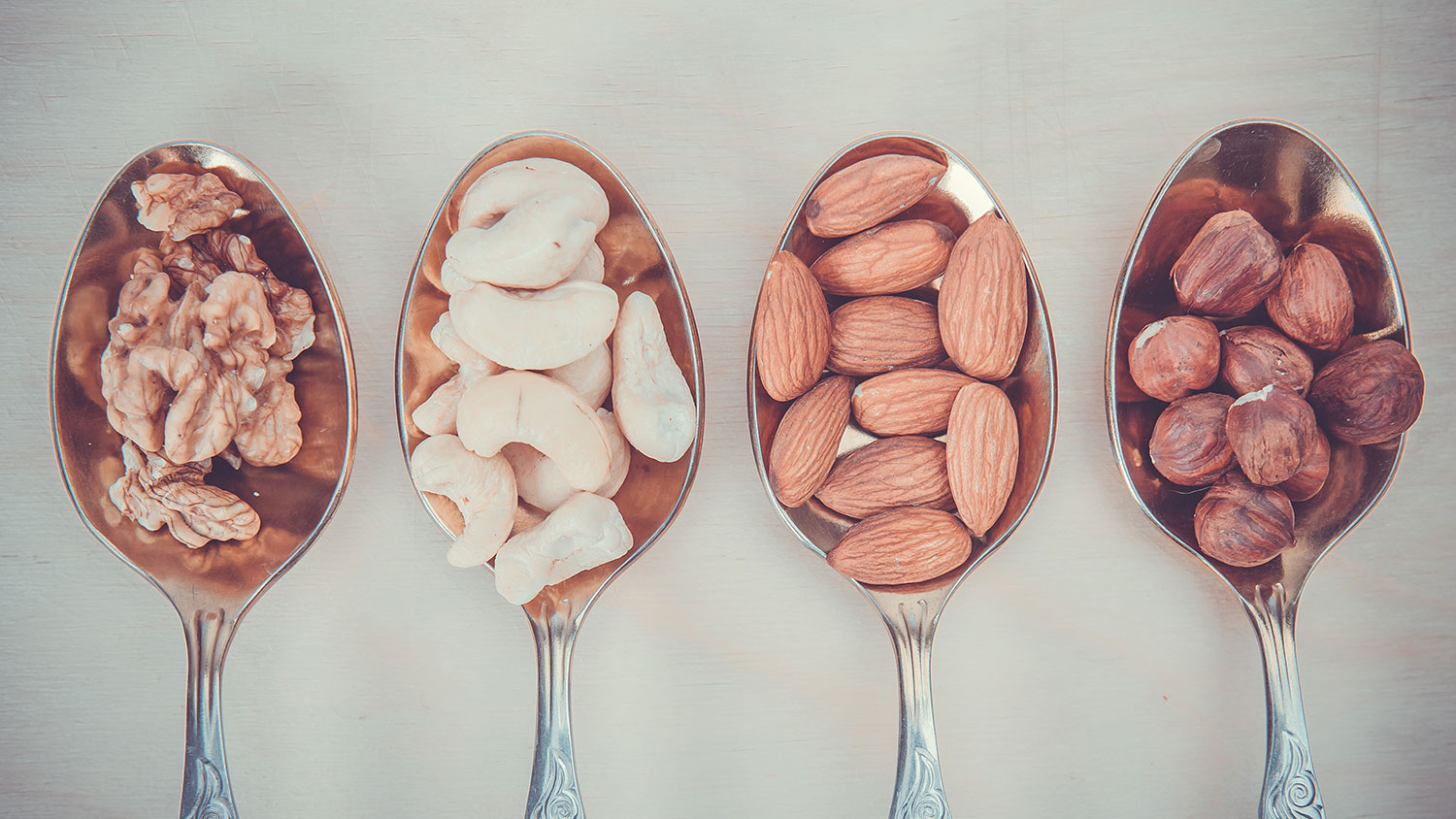Q. I keep a bag of nuts and dried fruit in my desk at work. Are there any nuts or seeds that I can feel good about eating? What about dried fruit? Given the drought in California, I don’t relish the idea of contributing to the state’s water woes by buying almonds or walnuts. Peanuts are much cheaper than tree nuts, but the amount of saturated fat gives me pause. I don’t know anything about the impacts of growing some of the more exotic nuts, like Brazil nuts, cashews, and hazelnuts.
Any suggestions on what to put in my trail mix that’s healthy for the planet and for me?
Adrian
Washington, DC
A. Dearest Adrian,
I, too, love a snack of trail mix now and again. Crunchy, healthy nuts plus chewy, healthy dried fruit plus … oh, I believe you’ve forgotten the most important ingredient in any trail mix: chocolate, of course! Anyway, that power combo is not only toothsome and satisfying, it’s also infinitely customizable, so you can cherry-pick the greenest ingredients. How many other between-meal treats can say the same?
Now to the matter of how to populate your snack bag. Let’s start with the more complicated side of the equation: the nuts. For while the health bennies of these crackly flavor bombs generally apply across the board, the environmental impacts of their cultivation do not. We’ve dealt quite a bit with almonds and their water requirements here at Grist, and walnuts and pistachios raise the same issues, so for now let’s skip those. I’m not going to tell you to stop eating them altogether – it’s complicated, like most food issues – but it’s good to consider their water footprints all the same.
Peanuts aren’t so easy to skip – without them, GORP becomes the much less appetizing GOR – nor should we. Locally grown options abound, for one, with most sprouting up in Georgia and other southern states (in the delightfully named Peanut Belt). They make their own fertilizer through nitrogen fixation (although farmers do tend to use fungicides on them, so buy organic if you can get them). And I wouldn’t worry too much about the saturated fat, Adrian. Peanuts are packed with healthy fats too, and their sat fat levels are on par with other nuts, like pecans, cashews, and walnuts. Just be mindful about your serving size with any nut: They’re remarkably good at cramming in the calories. (Of course, peanuts are technically legumes – but let’s not get too nutty with our sorting here.)
And speaking of local, pecans are also grown right around the corner from you in the southern states, while sunflower seeds hail from the nation’s middle. So tossing those into your patented trail mix will reduce shipping emissions over something tropical. (Note to those really into this local nut idea: Depending on your zip code, you can even forage your own black walnuts, hickory nuts, and pine nuts.)
What about those exotic nuts you mentioned? Brazil nuts, grown in – wait for it – Brazil’s Amazon, actually support the rainforest because they don’t grow well without their natural, diverse ecosystem around them. Cultivating them, then, gives locals an economic incentive not to slash and burn. Hazelnuts are a dream to grow: long-lasting, hardy, erosion-blocking, and requiring no pesticides. You can find US hazels, mostly from Oregon, and that’s a good bet because of child labor issues associated with Turkish hazelnuts.
Cashews are a little trickier. They’re light on the land, providing wildlife habitat and preventing erosion, but the processing stage is much more intensive. Cashews grow primarily in Vietnam, India, and northern Africa, but most are shipped to India for processing; there, workers shell the nuts by hand, sometimes exposing their skin to burns from the caustic oils inside. (Check out this detailed look at the system.) And that’s nothing compared to the human rights abuses suffered by some cashew processors in Vietnam, according to Human Rights Watch. Fortunately, there are some Fair Trade cashews to be had, and I’d go for them whenever possible.
Now what about the fruit side of this snack business? Whenever I tackle these food questions, I like to point people to the holy grail of eco-friendly eating: local farms, organic practices. Can we find dried fruits that fit these criteria? We can indeed, Adrian, especially if you’re up for a little project in the kitchen.
Here’s what I’d do: Hit up your local farmers market all season long and stock up on the juicy bounty you find – in your area, that’ll include strawberries, apples, plums, pears, figs, apricots, blueberries — and I’d go on if it weren’t making me so peckish. Then dry those goodies yourself! It’s easily done with an affordable dehydrator, and only slightly less easily done with your oven. You’ll be able to enjoy the tastes of summer all year, likely save some cash, and know that your chomping supports neighborhood farmers. Even if you’re not up for that project, you can probably sniff out some dried local fruits at the market anyway.
These suggestions ought to give you plenty of permutations for your trail mix, so I do hope you find some recipes to your liking. If you decide to throw in a few Fair Trade chocolate chips too, well, so much the better.
Munchily,
Umbra



